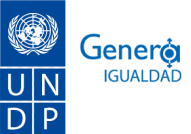Deyanira Mishari has an unusual job for an indigenous Peruvian woman—she’s Head of the San Matias-San Carlos Protection Forest.
Peru is rich in natural resources and home to the second largest Amazonian rainforest after Brazil, yet only 13 out of 76 rainforest governing bodies are led by women.
Deyanira was elected in 2018. Prior to that she’d spent 12 years working with the National Service of Protected Areas (SERNANP) in Peru.

Peru is rich in natural resources and home to the second largest Amazonian rainforest after Brazil. © UNDP Peru / Mónica Suárez Galindo
There are between 25,000 to 45,000 Asháninka living in the forests. Traditionally known for their independence and fighting skills, today they hunt and fish and grow subsistence crops such as yucca, rice, coffee and bananas.
Deyanira was born in Puerto Bermudez, an Asháninka community that is part of the network of communities and one of the many forests protected by SERNANP and indigenous leaders.

There are between 25,000 to 45,000 Asháninka living in the forests.© UNDP Peru / Mónica Suárez Galindo
“Here we are all equal: park rangers and specialists, men and women. We all have the abilities and skills,” she says. “[All of us] preserve these natural areas. We defend our territories.”
 Deyanira Mishari has an unusual job for an indigenous Peruvian woman—she’s Head of the San Matias-San Carlos Protection Forest. © UNDP Peru / Mónica Suárez GalindoPart of her job is caring for another important part of Peruvian Amazon culture; it’s wide variety of languages.
Deyanira Mishari has an unusual job for an indigenous Peruvian woman—she’s Head of the San Matias-San Carlos Protection Forest. © UNDP Peru / Mónica Suárez GalindoPart of her job is caring for another important part of Peruvian Amazon culture; it’s wide variety of languages.
There are 48 different indigenous languages in Peru, 41 of them from the Amazon, which makes it one of the most linguistically diverse regions in the Americas. The work that Deyanira and other leaders do helps to preserve the importance of these indigenous languages, so that those who speak them can be heard in their own voice.

Feliciano Mañaningo is a member of the Ashéninka community at Dulce Gloria (Yurúa, Ucayali) . © UNDP Peru / Mónica Suárez Galindo
UNESCO estimates that more than half the world’s languages could become extinct by 2100. The United Nations has declared 2019 the International Year of Indigenous Languages to recognize the role languages play, not only in communication but also as a repository for cultural identity and history.
The number of indigenous languages in the rainforest requires expert resource management, knowledge of the land and intercultural relations, and its leadership that Deyanira provides as she fights against the man-made dangers such as illegal logging, and ever-expanding agricultural areas, and even drug trafficking which threaten indigenous forest communities.




The 48 different indigenous languages in Peru makes it one of the most linguistically diverse regions in the Americas. Peru is working to preserve the importance of these indigenous languages, so that those who speak them can be heard in their own voice.
Deyanira coordinates 29 indigenous communities to come up with ways to protect their natural resources and the astounding and unparalleled biodiversity of the rainforest—there are an estimated 2.5 million insect species and tens of thousands of plants and some 2,000 birds and mammals.
Juvencio Parco is a member of the Asháninka community at Alto Chivis (Puerto Bermúdez, Pasco). © UNDP Peru / Mónica Suárez  Galindo
Galindo
UNDP works with Deyanira and other rainforest leaders to ensure good Amazon territory management, one that is led by men and women alike, respecting their rights, their wisdom and their opinions in the decision-making process about the future of their communities.

A young family member in Ayacucho, Peru holds a sign that says “Sustainable Development Goals” in the indigenous language of Quechua. © UNDP Peru / Mónica Suárez Galindo
Discover more about how indigenous languages are a unique expression of a collective identity.
Footnotes: Author: Marcelo Gonzáles Montoya; Photos: UNDP Peru / Mónica Suárez Galindo, Nuria Angeles Tapia, Giulianna Camarena Montenegro; cover photo: UNDP Peru / Nuria Angeles Tapia
Fuente:https://stories.undp.org/here-we-are-all-equal

